Jeffree Star Discusses Androgyny, His New Makeup Palette, and That Controversial Ad

Makeup artist Jeffree Star is one of the Internet beauty community’s OG provocateurs. He’s not afraid to push the envelope when it comes to expressing himself—be it speaking his mind or using makeup to challenge gender norms. Look at his YouTube channel and you’ll find him smoking weed rolled in oil-blotting papers and rocking a Going to My Ex’s Funeral makeup look. It’s that level of unabashed candor and sense of self that’s earned him 4.2 million Instagram followers and a wildly successful makeup line.
But it’s also often led the influencer to a lot of controversy, the latest being accusations of putting a model in blackface in an ad for his new eyeshadow palette, Androgyny. While Star declined to offer glamour.com an official comment on the issue, he did come to model Nikita Dragun’s defense on Twitter. (Dragun, a half-Mexican, half–Southeast Asian model, also refuted comparisons to problematic cultural appropriation.)
The palette, which launches online today for $45 at jeffreestarcosmetics.com, channels Star’s signature DNA but also carries a deeper meaning beyond shades that slay. We caught up with Star to learn more about his mission to challenge beauty norms and use makeup as a way to express identity.

Glamour: Tell us about the palette. Why is this a big launch for you?
Jeffree Star: Last year I released my first-ever palette, the Beauty Killer Palette, and with that one I really pushed the envelope of being weird. I think a lot of people are too safe in the makeup industry. I think everyone has ripped off the Urban Decay Naked Palette so many times, so this time I thought, OK, everyone always wants neutrals. And I’m down for that, but we’ve got to give them something else. I can’t just do a palette of only taupes and browns. That’s not Jeffree Star. I made the top row very safe, and I thought, Well, I want people to be able to play with color and have fun with their look and try something new. That’s what this brand’s about, creativity. So I added in the dark green, the blue, the military color, just to give people something different.
Glamour: You’ve referred to these colors as “neutral.” Can you explain how you use these as your basic neutral shades?
JS: When you first look at the palette, some people are like, “Oh my god, this is a little intimidating,” but I think people can use color sparingly. Some people are afraid to try something different; they get stuck in the same makeup routine. It’s the same brown eye and a wing, but I want people to get out of their comfort zone.
Glamour: The name of your palette feels very personal. Why call it Androgyny? What does that mean to you?
JS: It’s being fearless and yourself. I feel like with the whole Internet era, people can be so judgmental and evil online. [So this is about] owning your own self and showing your self-worth. I think androgyny is a good example of being you, being completely fearless and really not letting anyone tell you what to do. It’s very masculine and feminine at the same time. That word means a lot to me. People see men in makeup and have so many different opinions, so I wanted to shed light on the subject. When we were doing the shoot, I really wanted different people, so we have a straight male in the ad, we have a transgender women, we have a drag queen, and we have me. I wanted an eclectic mix of beautiful individuals who celebrate the word androgyny.
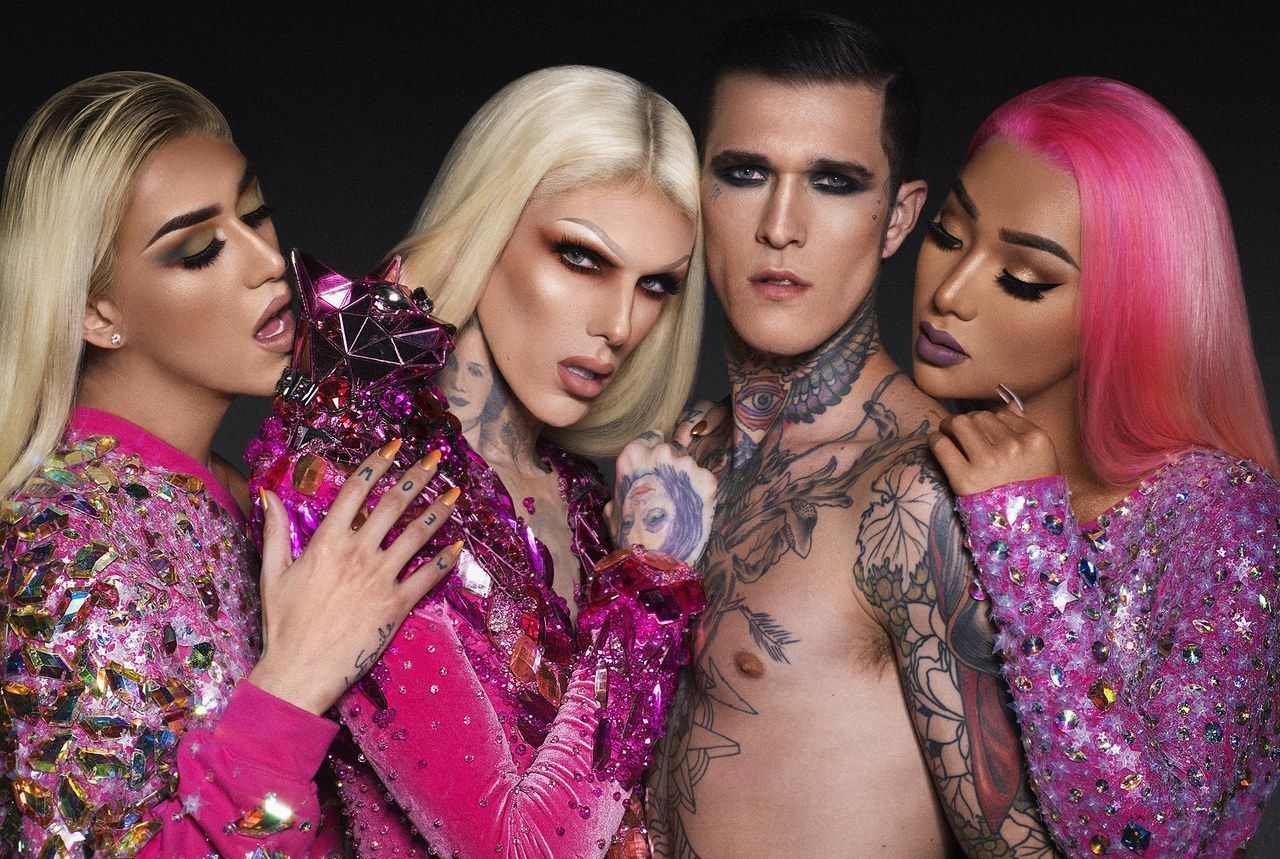
Star’s campaign ad for the Androgyny palette, which sparked a flood of controversy on Twitter
Glamour: What about you, personally? How do you embody androgyny?
JS: The cool thing with me is I really can do anything, which is so fun. I wake up and I’m like, Do I want to look like this today, or do I want to be super feminine? And before the shoot I looked back at all the ad campaigns and beauty stuff that we had done to date for my brands, and I had never taken it to the boy side of myself. So the real hair, brows, and shaved head—that picture [see it further down, below] shut down my Internet with so much amazing feedback. It’s so different, and people are so used to seeing me with the pink hair, the girly, more feminine side. I wanted to turn the tables. I covered all my tattoos, and I wanted to make a statement.
Glamour: How has beauty helped you shape your personal identity?
JS: It’s crazy—when I first started playing with makeup, I was 12 years old, and I didn’t really know what it was. I just loved the idea of transformation. For some reason that was an obsession of mine. I loved that you could become a character. So to me it was an extension of art. Not like I was hiding anything, but it’s almost like a mask or a costume. You just feel different, like a boss-ass bitch. And I love that at the end of the day you can wipe it off, and you’re back to you. It’s an extension of your artistic side. And beauty and makeup have molded me into the person I think I am. It’s crazy what makeup has done for the entire world. We have these amazing boys in beauty finally becoming accepted by the mainstream. I think the beauty industry has taken an amazing turn.
Glamour: How can makeup be androgynous?
JS: I think people have the same standards of what masculinity should be and what femininity is. So it’s cool that makeup can change that. Tom Ford released a boy kit where normal, grown-ass men could get a moisturizer and what they’re calling “male concealers.” It’s cool that a prestigious fashion brand is like, “Hey, men can wear concealer and light powder, and it can give you a little bit of confidence.” It’s cool to see it transform.
Glamour: How have you worked to open the beauty industry up to this?
JS: I’ve been on the Internet for a long time, and I remember when MySpace first happened—now we have Instagram, Facebook, Snapchat—but it was really just that website, and the whole world was basically on it. There were really no boys in beauty or guys in makeup. I felt like the Lone Ranger, and for so many years I’ve been advocating being able to wear more makeup and being able to have more fun. I don’t know why it’s being more accepted or why more men are feeling the need or the desire to wear makeup now, but I’m obsessed with it. I love it. And I’m happy people are open-minded. It’s cool when I see 15-year-olds from Alabama online, and they’re wearing full makeup, and they’re fearless. I get a lot of messages from people who see me living my life and not really caring, and they implement that in their lives. And that’s probably the biggest reward, just doing all of this and being able to help other people and not really knowing it.
Glamour: What advice would you give to someone who is nervous to get into makeup but would really like to start trying it out?
JS: They have to wake up one day and realize that other people’s opinions don’t matter. And I know that’s so hard. I don’t know why my brain clicked early on. Seventh grade was the first time I dyed my hair, and I went to school with red and black stripes, so I looked like a zebra. My mom was like, “All right, you have perfect grades, so I’m going to let you look how you want.” I’m blessed to have a family that always supported me being me. I think a lot of kids don’t have that, but they can find people like me online to just let them know that it’s OK.
Glamour: What is the biggest misconception about makeup and identity?
JS: People think you use makeup to cover up how you look. Like, “Oh, Jeffree must think he’s ugly, so he has to cover himself in a bunch of makeup.” I see that all the time—it’s almost like body shaming but in the beauty world. People think girls are wearing that amount of makeup to please someone when they’re really just having fun at home and being artistic. It’s more about self-expression and just having fun.
Glamour: OK, you’ve told us what androgyny means to you. But let’s have you show us. Can you walk us through a few of your favorite looks that illustrate your artistic expression?
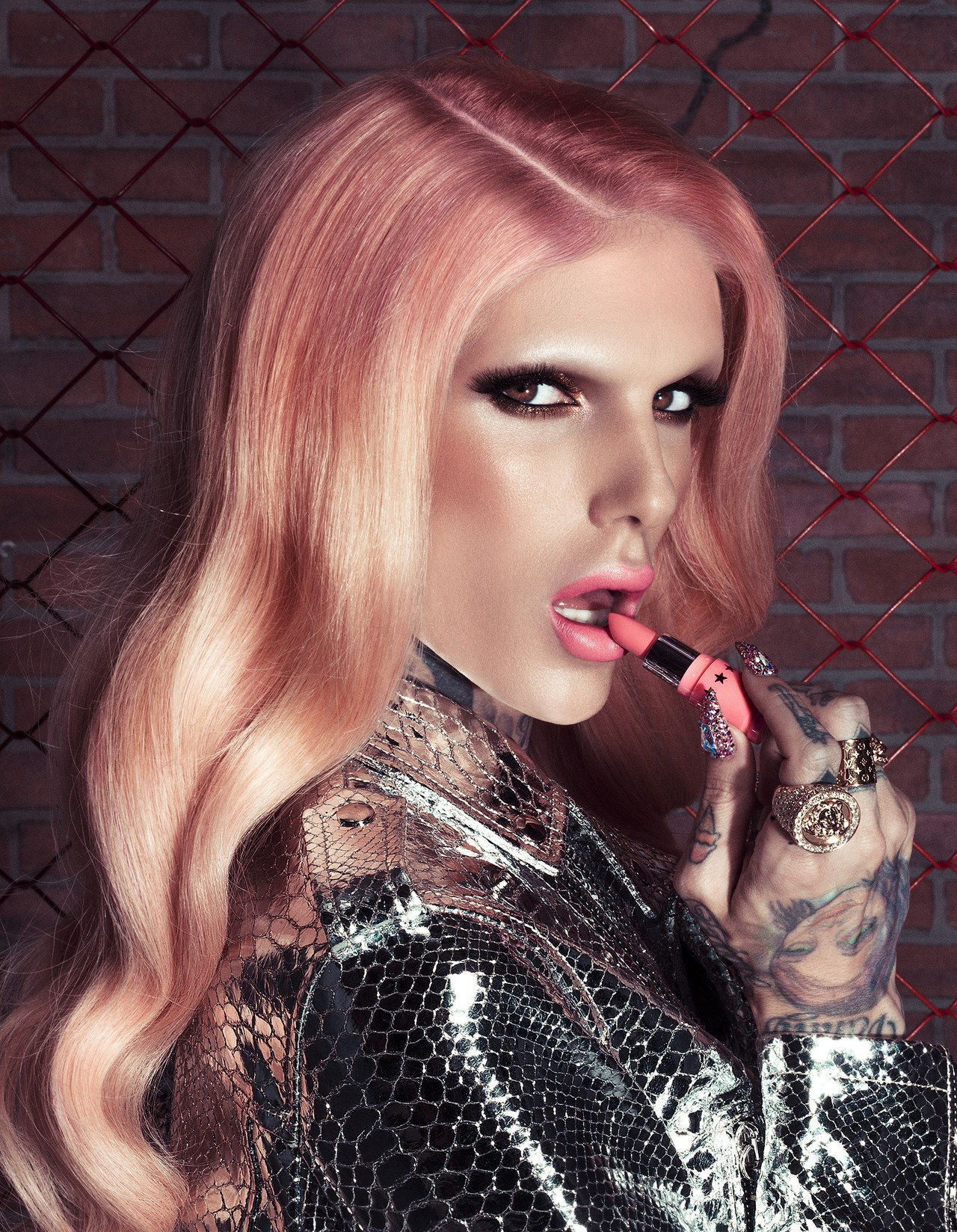
JS: I have no eyebrows in this picture, and I love taking it there. Like, yeah, it’s cute I’ve got the coral hair going on, love the jacket, but then there’s a no-brow moment. I was called “alien” in high school, not as a bad thing, but I shaved off my eyebrows in tenth grade, and my grandma almost had a stroke. My brows were too low for my face, and I wanted more lid space and room to play, and I’ve never let my eyebrows grow back since.
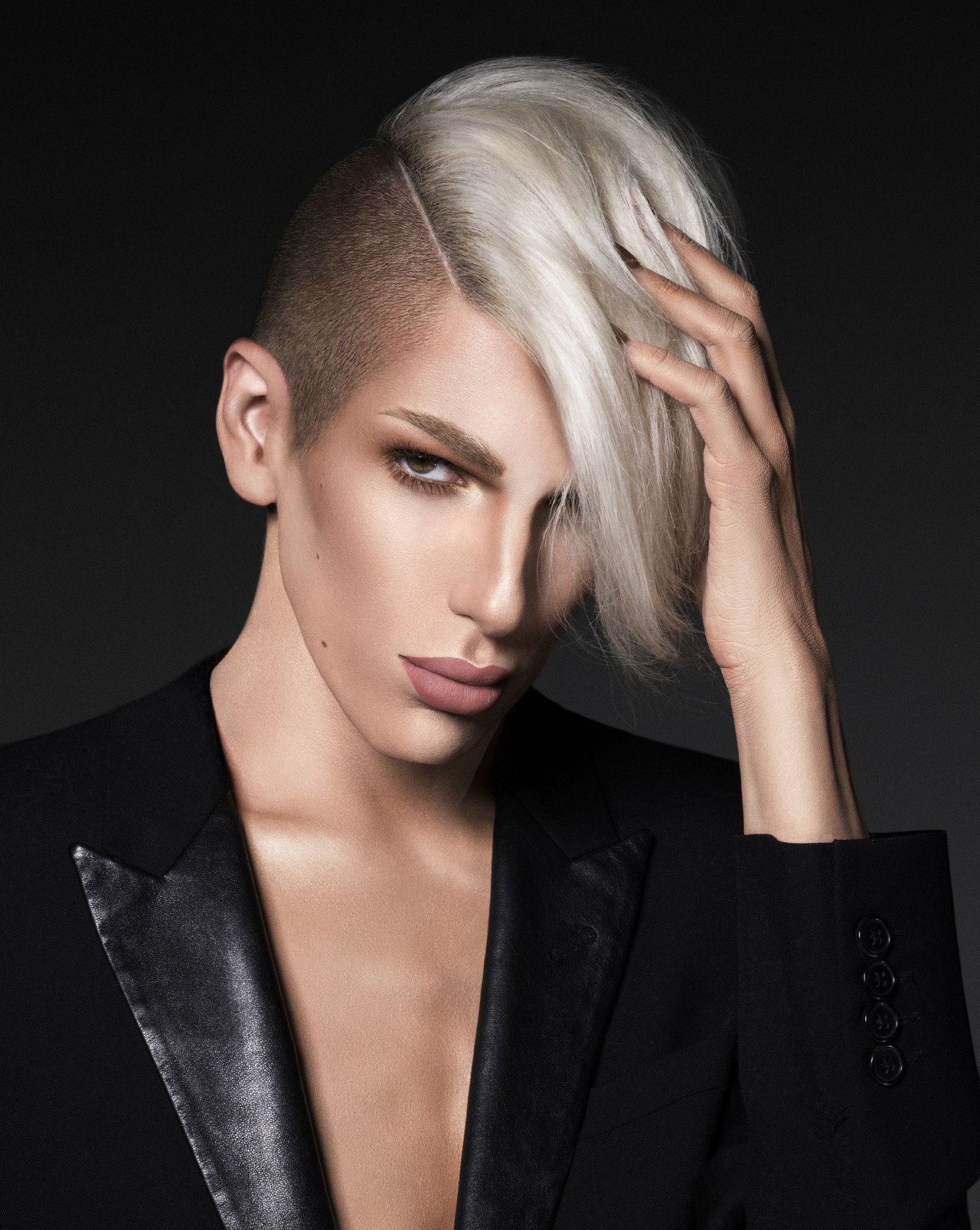
JS: I wanted something that was very masculine that could look kind of like Ruby Rose, just pushing the boundaries of what I normally do. I wear wigs all the time, so I wanted to do the shaved head to take it to that level.
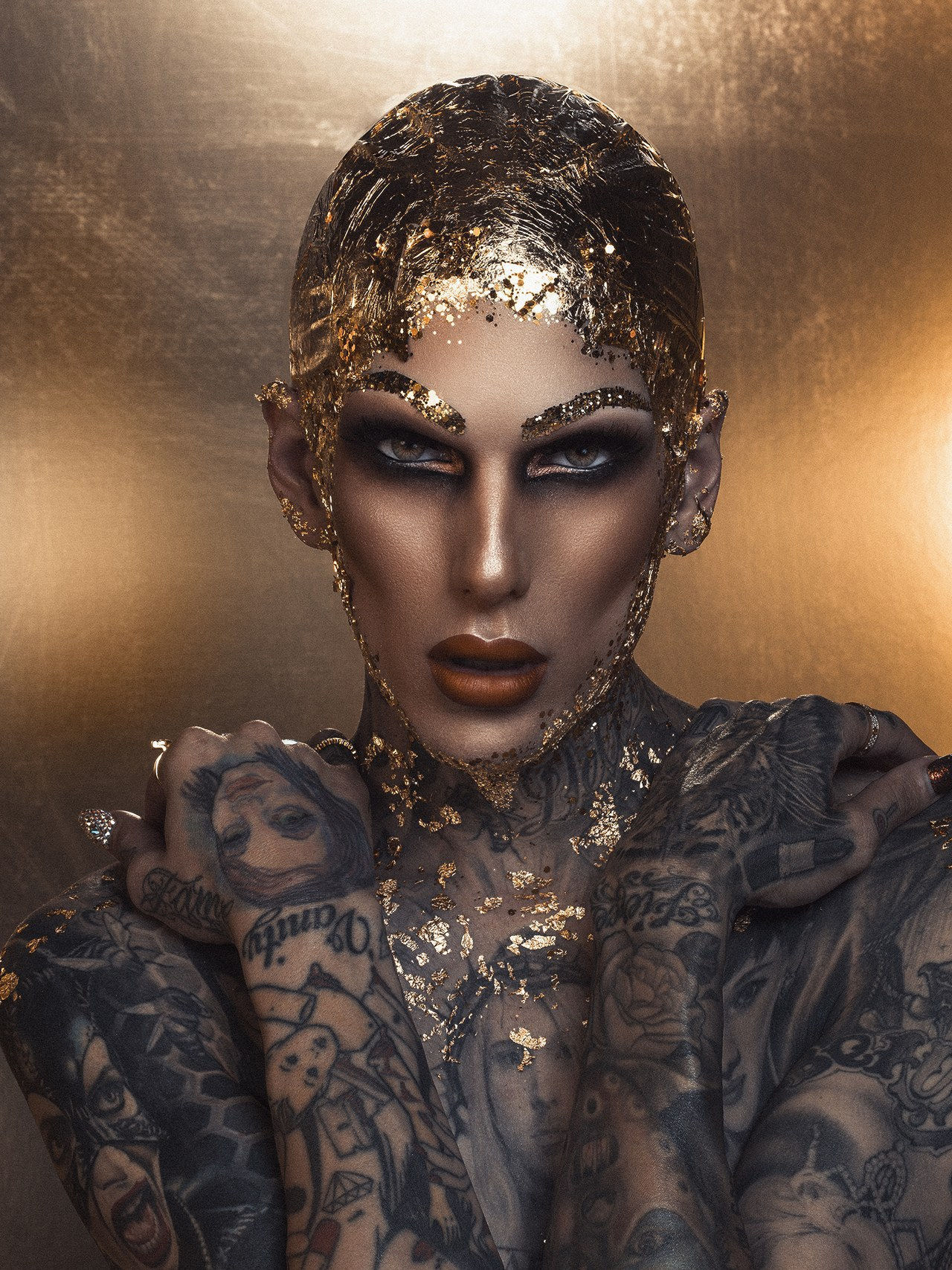
JS: Hair kind of defines you, as in stereotypically, short hair is for boys, and long hair is for girls. I thought it would be cool to scale it back and look like an alien beauty goddess. That picture is one of my most-liked pictures ever. It’s good to see people receiving art well. I think people are becoming more accepting of that.
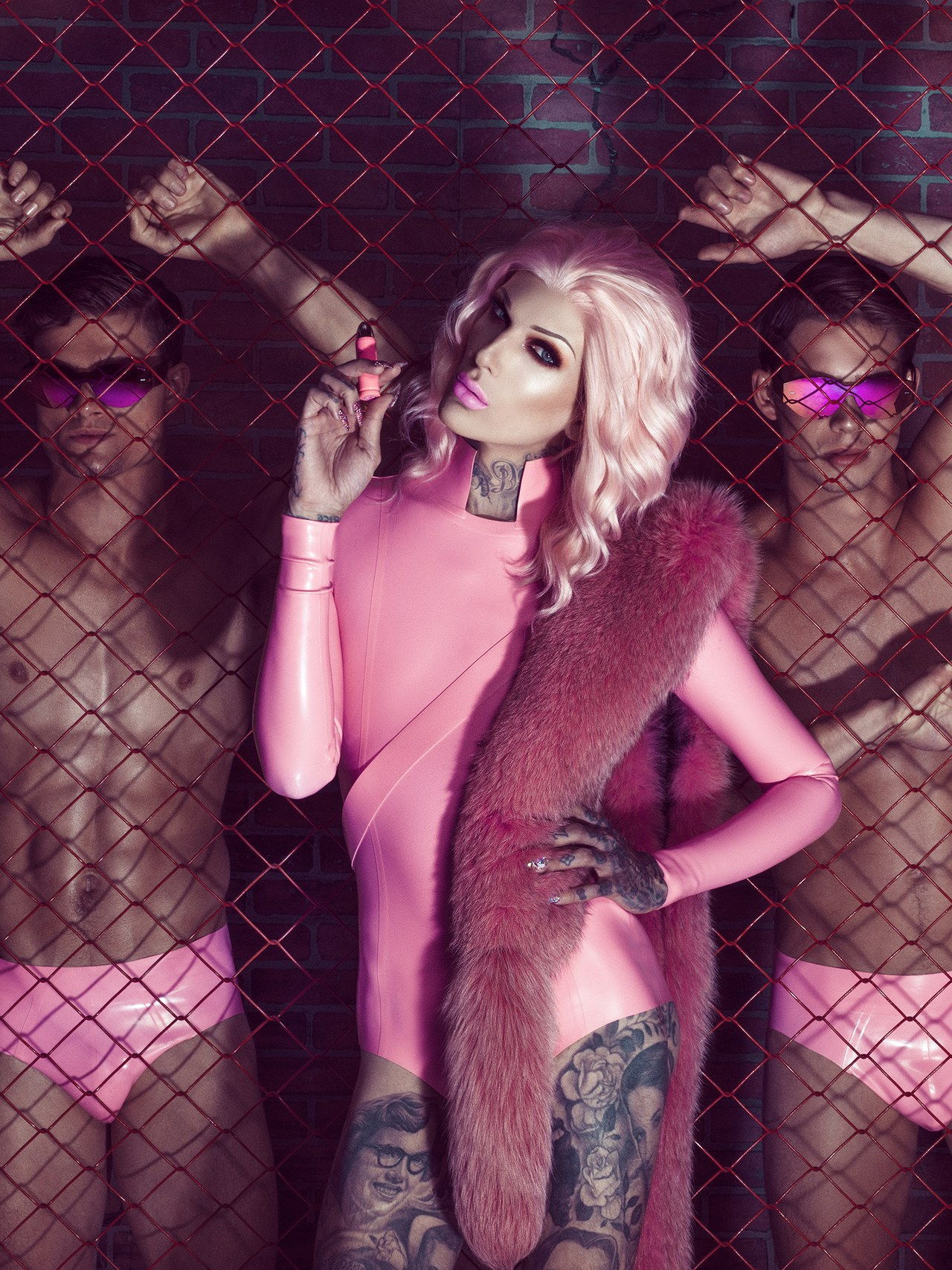
JS: This was me being a latex Barbie dream. I think with makeup ads, a lot of people forget to use men. Men use women as props all the time in music videos. It’s degrading, women are like accessories to so many dudes, but women never play back. So I wanted to be more sarcastic and flirty. I don’t want to say I’m using them as props, but I’m using them as props. It’s such a masculine-dominated world. Stop using women as accessories and use yourselves. But that was me making a joke at a lot of brands that play it safe.
Related Stories:
-Counterfeit Jeffree Star Lipsticks Are Popping Up Everywhere—Here’s What You Need to Know
-CoverGirl Just Announced Its First-Ever Male Spokesmodel, and It’s a Huge Win for Gender Inclusivity
-Meet 6 People Pushing to Make Fashion More Inclusive

